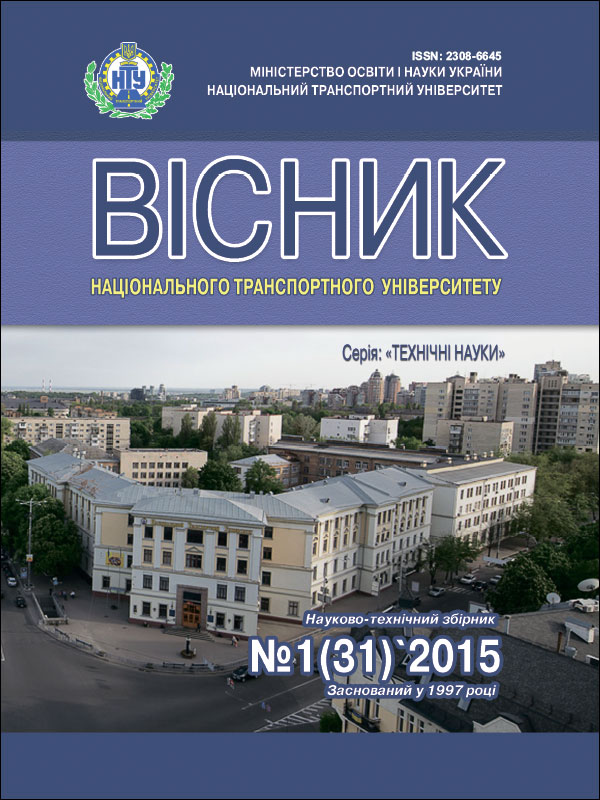CONCEPTION OF REFERENCE BOOKS OF DEFECTS IS IN EQUIPMENT AND PIPELINES OF POWER AND TRANSPORT SYSTEMS
ABSTRACT
Kharytonova L.V., Kutsenko O.G., Kadenko I.M. Flaw Handbook Concept for the Pipelines and Equipment of Power and Transport Systems. Visnyk National Transport University. Series «Technical sciences». Scientific and Technical Collection. - Kyiv: National Transport University, 2020. - Issue 1 (46).
The paper focuses on the one of the persperctive approaches to the increasing of thje safety of Nuclear Power Plants - Flaw Handbook Concept.
Object of study - equipment and piping of Nuclear Power Plants.
Purpose of study - the description of the Flaw Handbook Concept and the application of the concept for the specific example.
Method of the study - numerical procedures of the finite-element method and fracture mechanics.
In the modern economics the optimization of the performance and operation of industry and power systems is of the main importance. The Flaw Handbook Concept is considered in the paper. This concept is applied on the nuclear power plants in the leading states with the aim of the optimization of the procedures of in-service inspection and repair. The main steps of the concept are considered and applied for the specific example. An example of Flaw Handbook using is analysed.
The results of the paper can be incorporated into the procedures of in-service inspection for the safety-significant equipment and piping.
KEYWORDS: FLAW HANDBOOK, BRITTLE FRACTURE, FATIGUE, FINITE-ELEMENT METHOD, SURGE PIPE.
REFERENCES
- ASME Boiler and Pressure Vessel Code - Section XI. Rules for Inservice Inspection of Nuclear Power Plant Components - 2010 edition, inclusive of all published Addenda, The American Society of Mechanical Engineers, New York. - 543P [in English].
- Unified Procedure for Lifetime Assessment of Components and Piping in WWER NPPs (VERLIFE). - Version 2011, v.2.- 243P [in English].
- PNAE G-7-002-86. Codes for Strength Calculation of Equipment and Pipelines of Nuclear Power Facilities. - Moscow: Energoatomizdat, 1989. - 525c [in Russian].
AUTHOR
Kharytonova Lesia V., Candidate of Physical and Mathematical Sciences, associate professor, National Transport University, associate professor of The Department of Informative Systems and Technologies, e-mail: kharytonova-lv@ukr.net, tel. +380508001412, Ukraine, 01010, Kyiv, М. Omelianovycha-Pavlenka str. 1, of. 347a, orcid.org/0000-0002-0108-6702.
Kutsenko Oleksii G., Candidate of Physical and Mathematical Sciences, associate professor, Taras Shevchenko National University of Kyiv, associate professor of The Department of Mechanics of Continua, e-mail: alex_kutz@ukr.net, tel.+380973775563, Ukraine, 03127, Kyiv, Ave. Academician Glushkov, 4е, of. 402, orcid.org/0000-0001-5089-0409.
Kadenko Igor M. Doctor of Physical and Mathematical Sciences, Professor, Taras Shevchenko National University of Kyiv, Professor, head of the Department of Nuclear Physics, e-mail: ndef.office@gmail.com, tel.+380442597533, Ukraine, 03127, Kyiv, Ave. Academician Glushkov, 4е, of. 24, orcid.org/0000-0001-8766-4229.
REVIEWER
Gavrylenko V.V., Doctor of Physical and Mathematical Sciences, Professor, head of the Department of Informative Systems and Technologies, National Transport University, Kyiv, Ukraine
Lymarchenko O.S., Doctor of Technical Sciences, Professor, head of the Department of Mechanics of Continua, Taras Shevchenko National University of Kyiv, Kyiv, Ukraine
Article language: Ukrainian
Open Access: http://publications.ntu.edu.ua/visnyk/46/387.pdf
Print date: 15.04.2020
Online publication date: 27.10.2020
